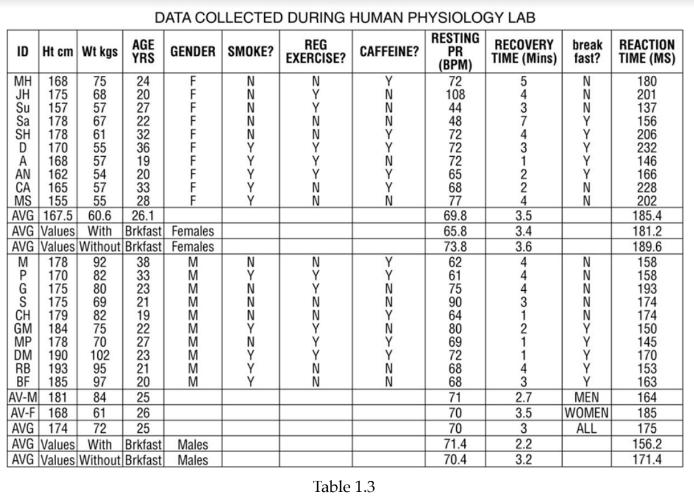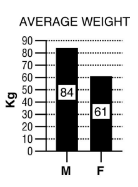Beta-endorphin is produced from the same prohormone as
A) glucagon.
B) adrenocorticotropin (ACTH).
C) insulin.
D) aldosterone.
E) thyroxine.
B) adrenocorticotropin (ACTH).
You might also like to view...
A foreign ________ causes an allergic reaction.
A. antigen B. antibody C. pathogen D. basophil
Which of the following descriptions of a preganglionic neuron is NOT correct?
a) Has axons that exit the CNS in a cranial or spinal nerve. b) Has myelinated axons. c) Forms the first part of an autonomic motor pathway. d) Has its cell body in the brain or spinal cord. e) Forms gap junctions with postganglionic neurons in autonomic ganglia.
Following is a table of data collected from one section of an 8 A.M. physiology lab. There were 20 students present, 10 men and 10 women. Information collected from the students included their height, weight, age, and resting pulse rate. In addition, the students were surveyed to see if they smoked cigarettes, considered themselves "regular exercisers," if they had consumed caffeine the morning
of the lab, and if they had eaten breakfast that day. A "y" or "n" (yes or no) was recorded to indicate their answers. Each student did "jumping jacks" for 5 minutes and recorded the time required to regain their resting heart rate, which is listed on the table as "recovery time." Finally, each student participated in an exercise designed to measure their reaction time (in milliseconds) in catching an object dropped by a lab partner according to specified criteria. Use this table to answer the following questions. Ignore statistical problems caused by small sample size, and so on.
You are doing an experiment to determine if caffeine consumption affects reaction time.
A. Which is the dependent variable?
B. Which is the independent variable?
C. Briefly describe some ways you might manipulate the independent variable.
D. Name three stimuli you could use, and how you might measure reaction time for each.
E. Write an appropriate hypothesis for this study.
F. You compute the following average values from your experiment. What would be a logical conclusion for
these data?
Average caffeine consumer's reaction time: 400 ms
Average noncaffeine consumer's reaction time: 650 ms
G. Sketch a simple graph to convey these results to your classmates. What kind of graph did you choose?
Why? Which variable did you plot on the x-axis? Which one did you plot on the y-axis? Why?
H. Do the results of this experiment support the hypothesis you chose?


What does the depolarization of the transverse tubules (T-tubules) promote?
A) binding of acetylcholine to ligand-gated sodium ion channels B) release of calcium from the sarcoplasmic reticulum C) entry of sodium ions into the muscle fiber through voltage-gated sodium ion channels D) release of acetylcholine from vesicles in the motor neuron into the synaptic cleft